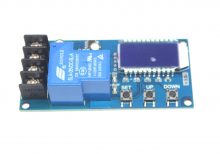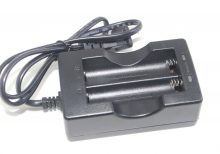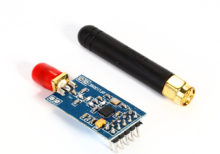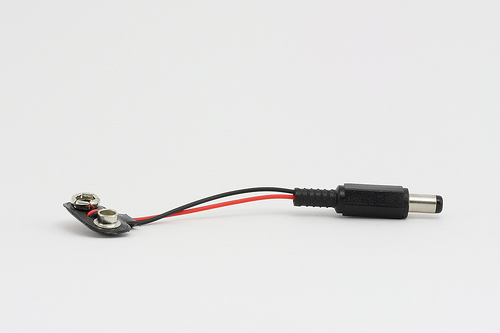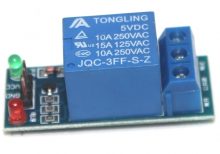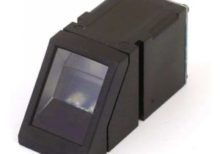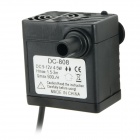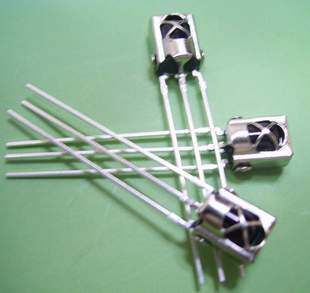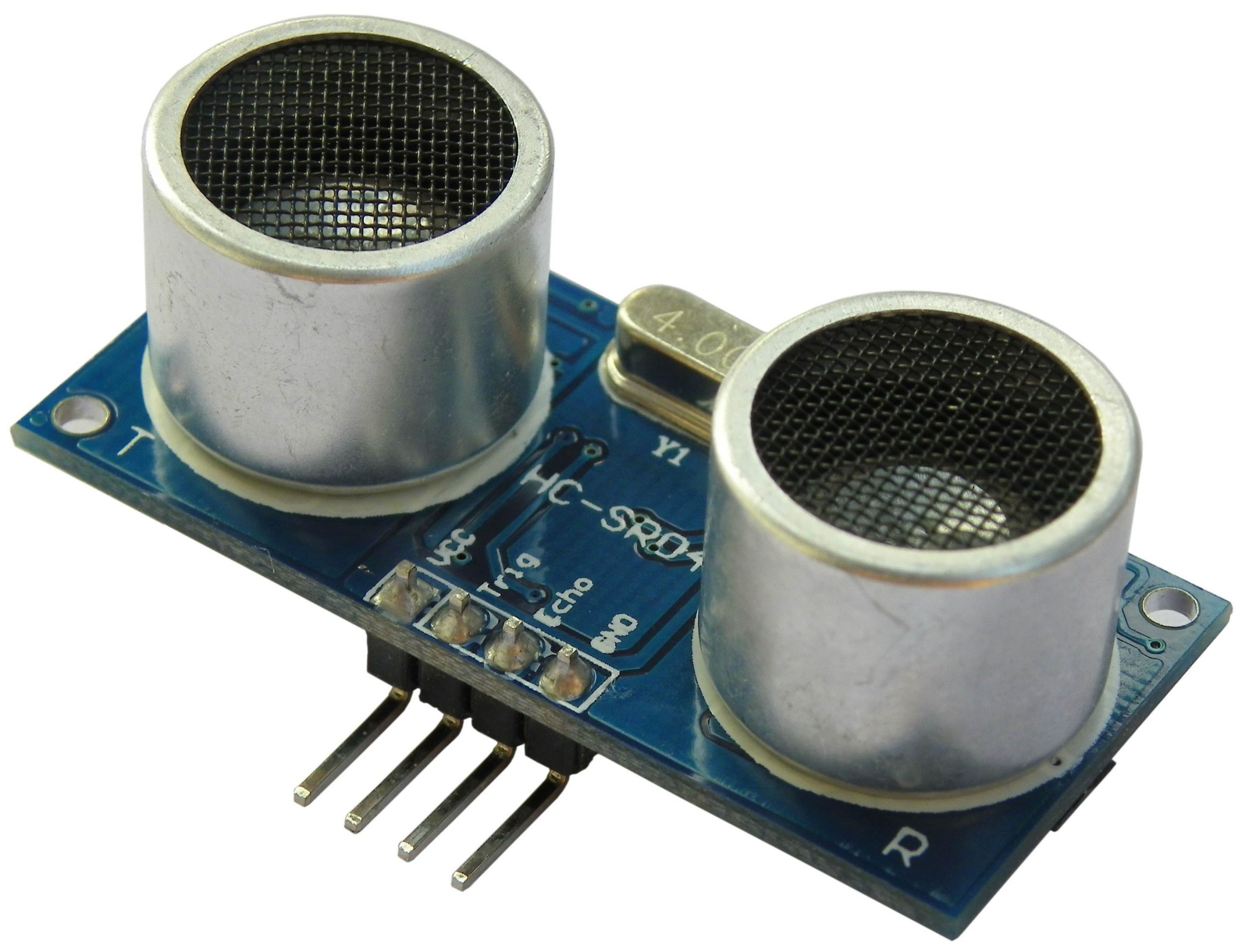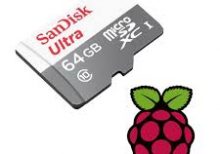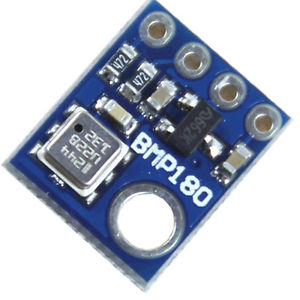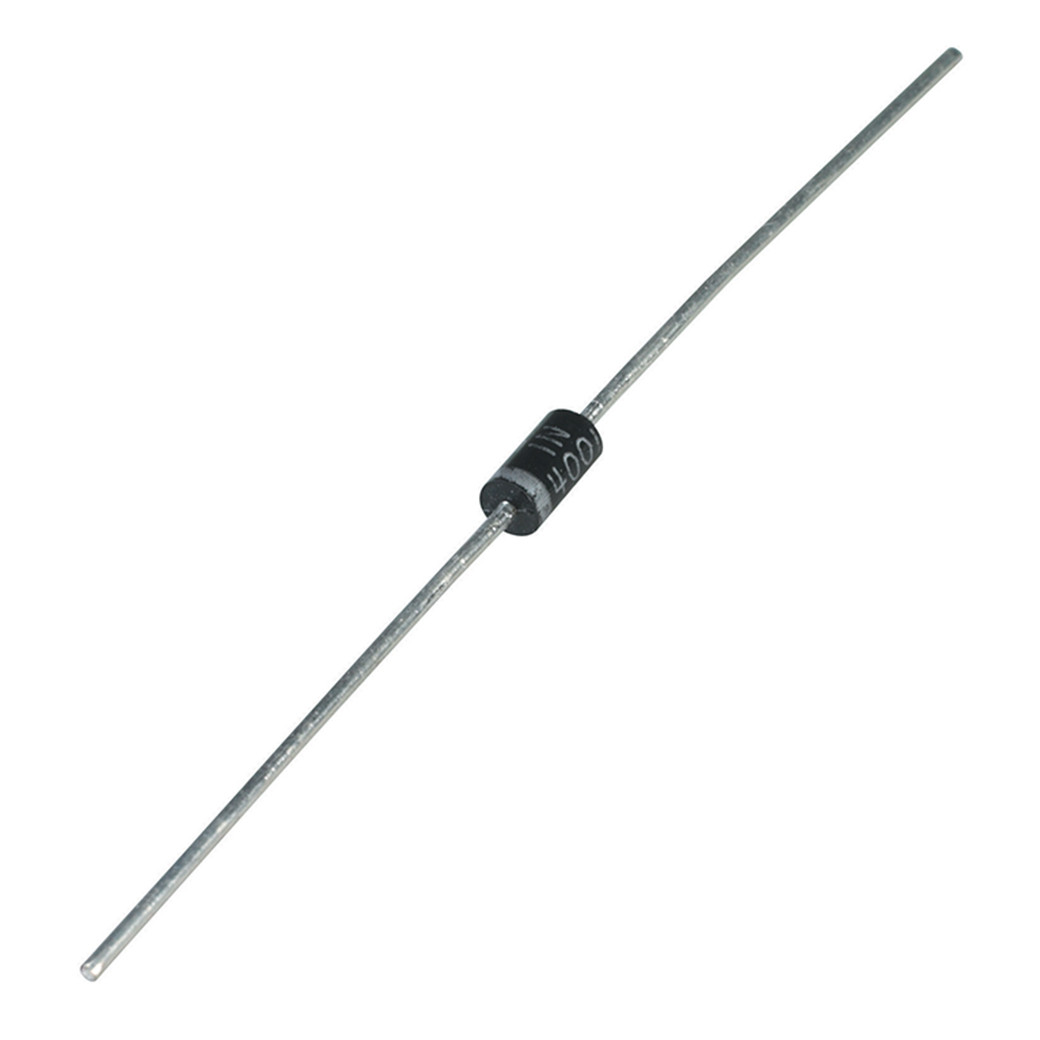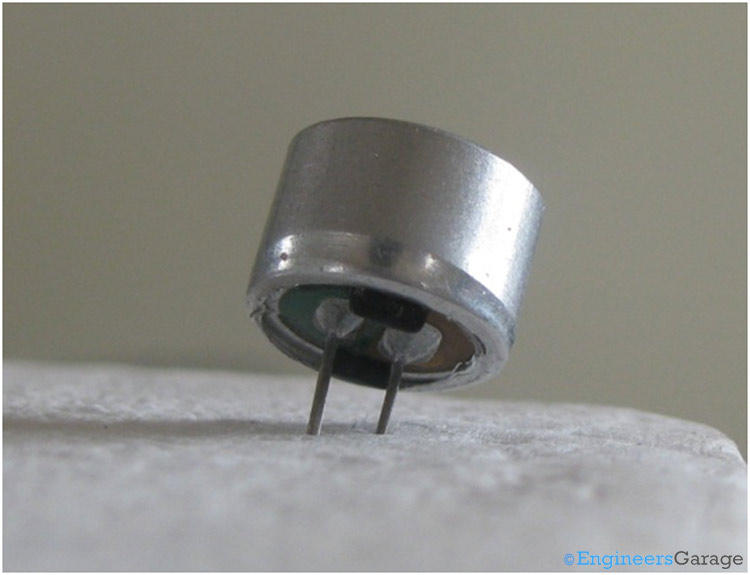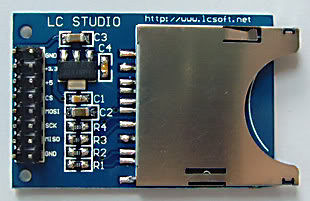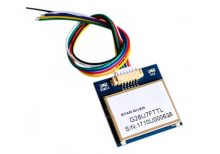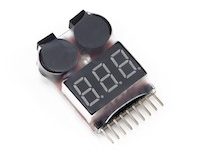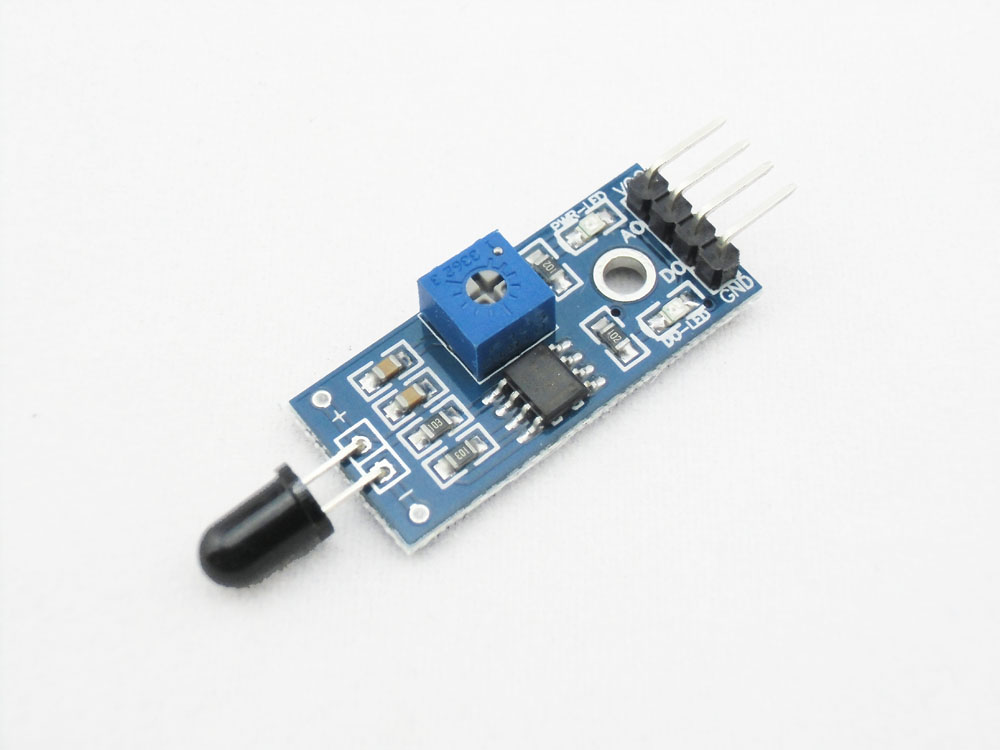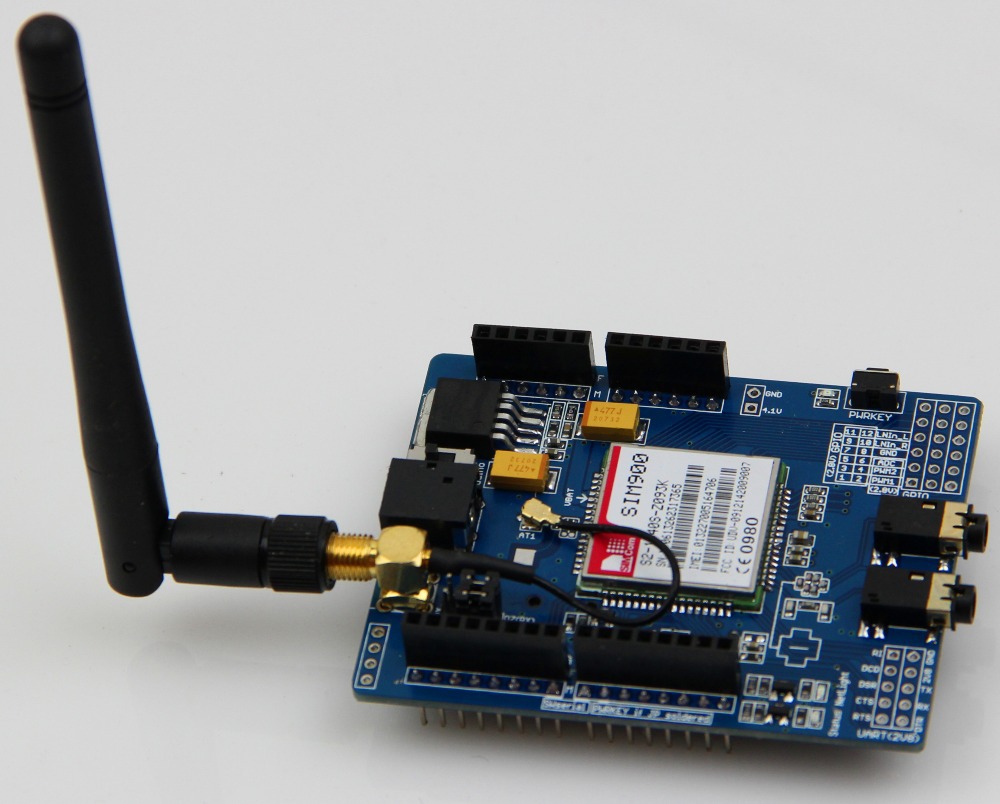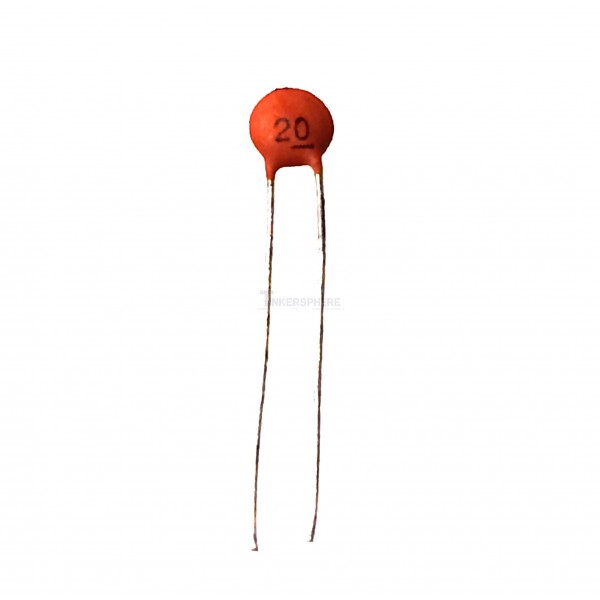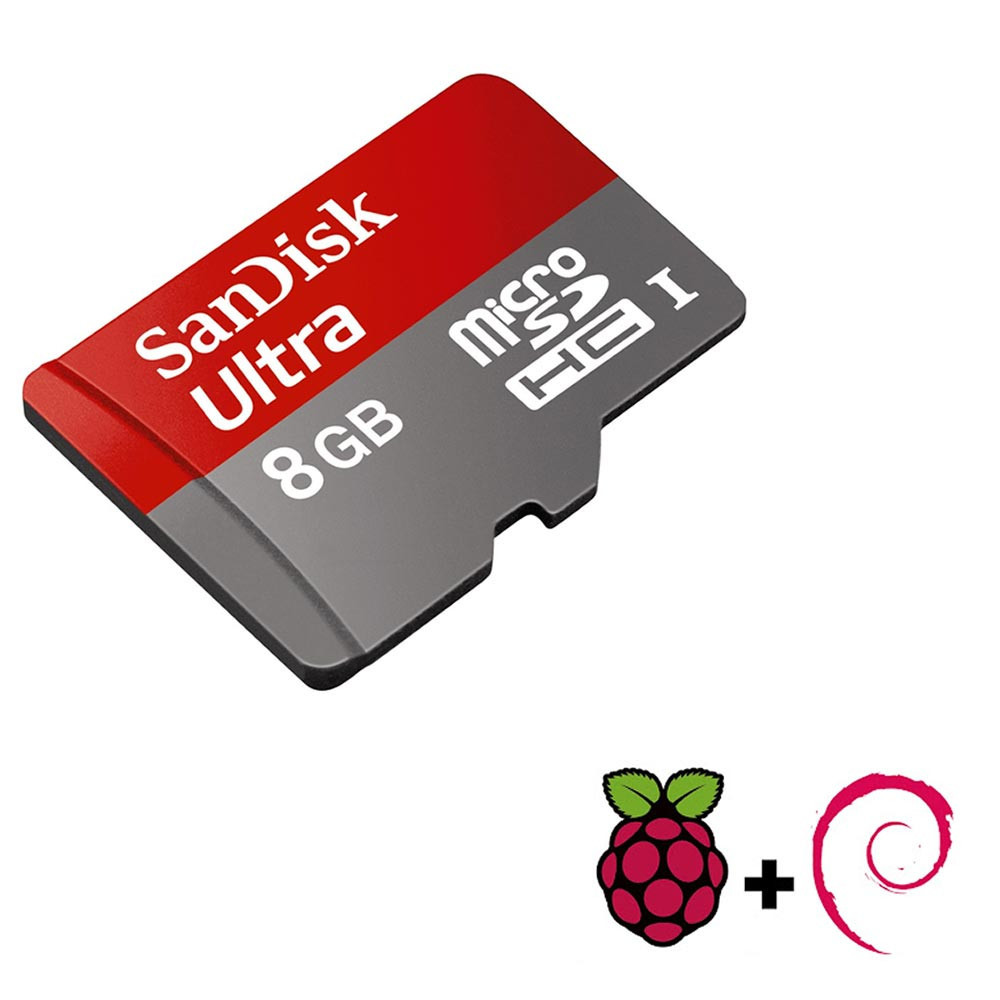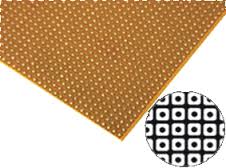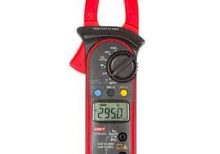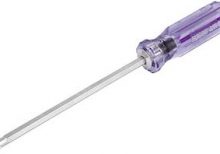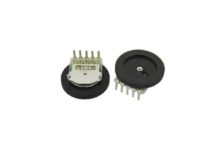|
Description |
Description:
The XY-L30A Battery Overcharge Protection and Control Module is designed to safeguard lithium-ion and lithium-polymer batteries from overcharging and over-discharging. This module ensures battery longevity and safety by managing charging cycles and protecting against excessive voltage and current.
Key Features:
- Overcharge Protection: Prevents the battery from charging beyond its maximum voltage, safeguarding against potential damage.
- Over-discharge Protection: Ensures the battery does not discharge below its minimum voltage, which can prolong battery life.
- Charge Control: Regulates the charging process to maintain safe battery operation.
- LED Indicators: Provides visual feedback for charging status and protection activation.
- Compact Design: Easy to integrate into various battery-powered applications.
Technical Specifications:
- Operating Voltage: Typically 3.2V to 4.2V per cell
- Maximum Charge Voltage: 4.2V per cell
- Minimum Discharge Voltage: 2.5V per cell
- Charge Current: Up to 3A (varies by model)
- Discharge Current: Up to 3A (varies by model)
- Dimensions: Compact size suitable for integration into battery packs
Applications:
- Battery Packs: Protects lithium-ion and lithium-polymer batteries in various battery packs.
- Consumer Electronics: Used in devices requiring reliable battery protection.
- DIY Projects: Ideal for hobbyists working with rechargeable battery systems.
- Power Tools: Ensures safety and longevity in battery-operated power tools.
Datasheet:
For detailed technical information and specifications, please refer to the XY-L30A Battery Overcharge Protection and Control Module Datasheet.
|
Description:
The 18650 3.7V 4.2V LIPO charger is designed for charging 18650 lithium-ion batteries efficiently and safely. This charger module ensures proper voltage regulation and current management, making it ideal for various electronic projects and battery management systems.
Key Features:
- Compatible with 18650 lithium-ion batteries
- Charges at 3.7V nominal voltage and 4.2V full charge voltage
- Overcharge and over-discharge protection
- Short-circuit protection
- Compact design for easy integration
Technical Specifications:
- Input Voltage: AC 100-240V 50-60Hz
- Charging Voltage: 4.2V
- Charging Current: 1A (standard)
- Protection: Overcharge, over-discharge, short-circuit
- Dimensions: Compact size for versatile applications
Applications:
- Charging 18650 lithium-ion batteries
- Battery management systems
- DIY electronics and battery-powered projects
|
The 4S 40A 18650 Balanced Battery Management System (BMS) with Protection Board is designed to manage and protect a 4-series (4S) lithium-ion battery pack, typically using 18650 cells. This BMS ensures the safe operation of the battery pack by balancing the charge among cells, preventing overcharge, over-discharge, and overcurrent conditions. It is ideal for use in battery packs for electric vehicles, power tools, and other high-power applications.
Key Features:
- Suitable for 4-series (4S) lithium-ion battery packs
- Supports a continuous discharge current of up to 40A
- Provides cell balancing to ensure uniform charging
- Protection against overcharge, over-discharge, and overcurrent
- Short-circuit protection
- Built-in temperature protection
- Compact and lightweight design
Technical Specifications:
- Battery Configuration: 4S (4-series)
- Continuous Discharge Current: 40A
- Overcharge Protection Voltage: Typically 4.25V ±0.05V per cell
- Overdischarge Protection Voltage: Typically 2.8V ±0.05V per cell
- Balance Current: Typically 30mA
- Balance Voltage: Typically 4.2V ±0.05V per cell
- Overcurrent Protection: Activated at 60A (±5A)
- Short-Circuit Protection: Yes
- Operating Temperature Range: -20°C to +60°C
- Dimensions: Varies by manufacturer
- Weight: Varies by manufacturer
Applications:
- Electric Vehicles: Provides reliable battery management for electric cars, bikes, and scooters.
- Power Tools: Ensures safe and efficient operation of battery-powered tools.
- Energy Storage Systems: Manages and protects battery packs in solar and renewable energy storage solutions.
- Portable Devices: Enhances the safety and performance of high-capacity portable battery packs.
Usage:
- Connect the BMS to the battery pack according to the wiring diagram provided by the manufacturer.
- Ensure proper insulation and secure connections to prevent short circuits and other hazards.
- Install the BMS in a well-ventilated area to allow heat dissipation and prevent overheating.
- Monitor the battery pack during initial use to ensure proper operation and protection features.
- Regularly check the connections and condition of the BMS to maintain optimal performance.
Caution:
- Follow the wiring diagram carefully to avoid incorrect connections that can damage the BMS or battery pack.
- Do not exceed the rated current and voltage limits to prevent overheating and potential failure.
- Handle with care to avoid physical damage to the BMS components.
- Ensure proper ventilation to prevent overheating during high-current operation.
- Keep away from moisture and extreme temperatures to maintain reliability and longevity.
|
A set of male-female jumper wires includes multiple wires, each with a male connector on one end and a female connector on the other. These wires are commonly used in electronic prototyping and development to establish connections between components, breadboards, and circuit boards. The set typically comes in a variety of lengths and colors, making it versatile and easy to manage for various project needs.
Key Features:
- Connectors: Male connector on one end and female connector on the other
- Wire Type: Flexible, insulated wire for easy routing and manipulation
- Length Options: Set often includes wires of various lengths to suit different applications
- Color-Coded: Available in multiple colors for easy identification and organization
- Durability: High-quality materials for reliable and repeated use
- Compatibility: Fits standard 2.54mm (0.1 inch) pitch headers and connectors
Technical Specifications:
- Connector Type: Male-to-female
- Wire Gauge: Typically 28 AWG
- Insulation Material: PVC or similar flexible plastic
- Pitch: 2.54mm (0.1 inch)
- Length Options: Common lengths in the set may include 10cm, 20cm, 30cm, etc.
- Operating Temperature: Typically -40°C to +80°C
- Current Rating: Usually up to 1A
Applications:
- Prototyping: Ideal for creating and modifying circuits on breadboards and development boards.
- Educational Projects: Used for teaching and learning electronics and programming.
- DIY Electronics: Perfect for hobbyists working on various electronics projects and experiments.
- Temporary Connections: Useful for making temporary connections during the development and testing phases.
- Interfacing Modules: Facilitates connections between male pin headers and female sockets on different electronic modules and components.
|
The 4×4 Matrix Keypad is a user-friendly input device consisting of 16 keys arranged in a 4×4 matrix. It is widely used in embedded systems, microcontroller projects, and DIY electronics for user input. Each key press is detected by scanning the matrix, allowing for efficient and reliable data entry. The keypad is compact, durable, and easy to integrate into various projects.
Key Features:
- Key Configuration: 4 rows and 4 columns, totaling 16 keys
- Interface: Matrix scanning
- Key Labels: Numeric and function keys (0-9, A-D, *, #)
- Compact Design: Suitable for handheld devices and small projects
- Durable: Made from high-quality materials for long-lasting use
- Flexible: Can be connected to any microcontroller or development board
- Low Power Consumption: Efficient operation with minimal power usage
Technical Specifications:
- Number of Keys: 16 (4×4 matrix)
- Operating Voltage: 3.3V to 5V
- Current Consumption: < 10mA
- Contact Resistance: ≤ 200 ohms
- Insulation Resistance: ≥ 100M ohms (at 250V DC)
- Operating Temperature Range: -20°C to +60°C
- Keypad Dimensions: 69mm x 69mm x 1.8mm
- Connection Type: 8-pin header
Applications:
- Embedded Systems: User input for microcontroller-based projects.
- DIY Electronics: Ideal for hobbyists and makers creating custom projects.
- Access Control: Use in security systems for code entry.
- Consumer Electronics: Keypad input for appliances and gadgets.
- Educational Projects: Commonly used in educational kits and learning modules.
Usage:
- Wiring: Connect the 8-pin header to the microcontroller or development board, ensuring correct row and column connections.
- Programming: Use libraries (e.g., Keypad library for Arduino) to read key presses and handle input.
- Integration: Incorporate the keypad into your project for reliable user input.
- Testing: Verify the functionality by pressing keys and checking the output.
Caution:
- Proper Connection: Ensure the keypad is connected correctly to avoid malfunction.
- Voltage Levels: Operate within the specified voltage range to prevent damage.
Datasheet:
For detailed technical specifications, refer to the 4×4 Matrix Keypad Datasheet.
|
The Industrial Grade CC1101 Wireless Module is a high-performance, low-power radio transceiver module based on the CC1101 chip from Texas Instruments. It is designed for industrial and commercial applications requiring reliable wireless communication over long ranges and in challenging environments. The module operates in various frequency bands and is known for its robustness, low power consumption, and adaptability to different wireless standards.
Key Features:
- Chip: Texas Instruments CC1101
- Frequency Bands: Supports various frequency bands such as 315 MHz, 433 MHz, 868 MHz, and 915 MHz.
- Communication Protocols: Compatible with various communication protocols like 2-FSK, 4-FSK, GFSK, and OOK.
- Power Consumption: Low power consumption with various power-saving modes.
- Range: Typically provides long-range communication, depending on the environment and configuration.
- Interface: SPI (Serial Peripheral Interface) for communication with microcontrollers.
Technical Specifications:
- Operating Frequency: 315 MHz, 433 MHz, 868 MHz, 915 MHz (depending on the module variant)
- Modulation: 2-FSK, 4-FSK, GFSK, OOK
- Data Rate: Up to 500 kbps
- Power Supply: Typically 1.8V to 3.6V
- Current Consumption: Low power consumption with various power-saving modes
- Range: Up to several kilometers (depends on environment and antenna)
- Interface: SPI for communication with external microcontrollers
- Temperature Range: Industrial grade (-40°C to 85°C)
Applications:
- Industrial Automation: Used in industrial automation systems for wireless communication between devices.
- Remote Sensing: Suitable for remote sensing applications requiring long-range communication.
- Wireless Sensors: Ideal for wireless sensor networks and monitoring systems.
- Asset Tracking: Utilized in asset tracking systems where reliable long-range communication is necessary.
- Building Automation: Applied in building automation systems for controlling and monitoring systems remotely.
Datasheet:
For detailed technical information, refer to the CC1101 Datasheet provided by Texas Instruments, which includes comprehensive details on specifications, pin configuration, and operation.
|
The RC522 RFID Module Kit is a complete solution for adding RFID functionality to your projects. The module operates at 13.56MHz and uses the MFRC522 IC for communication with RFID cards and tags. It is designed for easy integration with microcontroller platforms like Arduino, making it ideal for access control, attendance systems, and other identification applications.
Key Features:
- Operates at 13.56MHz frequency
- Compatible with ISO/IEC 14443 Type A cards
- Supports MIFARE1 S50, MIFARE1 S70, MIFARE Ultralight, MIFARE Pro, and MIFARE DESFire cards
- SPI, I2C, and UART communication interfaces
- Low power consumption
- High data transfer rate (up to 10 Mbit/s)
- Compact design and easy to use
- Comes with RFID cards and key fobs
Technical Specifications:
- Operating Frequency: 13.56MHz
- IC Chip: MFRC522
- Communication Interfaces: SPI, I2C, UART
- Power Supply Voltage: 3.3V
- Current Consumption: 13-26mA
- Read Range: Up to 5 cm (depending on the antenna size and tag type)
- Dimensions: 40mm x 60mm x 5mm
Kit Components:
- RC522 RFID Module
- 1 x MIFARE 1K S50 RFID Card
- 1 x RFID Key Fob
- Header pins for connection
- Jumper wires for easy interfacing
Applications:
- Access control systems
- Time and attendance tracking
- Contactless payment systems
- Inventory management
- Asset tracking
- DIY electronics projects
Usage:
- Wiring:
- Connect the RC522 RFID module to your microcontroller platform using SPI, I2C, or UART interfaces. For Arduino, the typical SPI connections are:
- VCC to 3.3V
- GND to GND
- RST to Pin 9
- IRQ (not used)
- MISO to Pin 12
- MOSI to Pin 11
- SCK to Pin 13
- SDA (SS) to Pin 10
- Programming:
- Install the necessary libraries (e.g., MFRC522 library for Arduino).
- Use example code to initialize the module and read RFID tags or cards.
- Testing:
-
- Present an RFID card or key fob to the module and observe the UID output on the serial monitor.
Caution:
- Ensure proper handling to avoid damage from electrostatic discharge (ESD).
- Verify power supply requirements to prevent damage to the module.
- Keep the module away from strong electromagnetic fields to ensure reliable operation.
Datasheet:
For detailed technical specifications, refer to the MFRC522 Datasheet.
|
The Hub360 Arduino Starter Kit is a comprehensive package designed for beginners and enthusiasts looking to dive into the world of electronics and programming. This kit includes Arduino Uno, which is a microcontroller board based on the ATmega328P. The kit provides a variety of components and modules to help users learn and experiment with different electronic projects and concepts.
Key Features:
- Includes Arduino Uno board
- Comprehensive set of components and modules for various projects
- Ideal for beginners and hobbyists
- Detailed tutorial and project guide included
- USB interface for easy programming and power
- Compatible with Arduino IDE and various libraries
Technical Specifications:
- Microcontroller: ATmega328P
- Operating Voltage: 5V
- Input Voltage (recommended): 7-12V
- Digital I/O Pins: 14 (6 PWM outputs)
- Analog Input Pins: 6
- DC Current per I/O Pin: 20mA
- Flash Memory: 32KB (ATmega328P) of which 0.5KB used by bootloader
- SRAM: 2KB (ATmega328P)
- EEPROM: 1KB (ATmega328P)
- Clock Speed: 16 MHz
Kit Contents:
- ARDUINO BOARD 1
- ARDUINO USB CABLE 1
- ARDUINO BATTERY CONNECTOR 1
- 400 HOLE BREADBOARD 1
- LED (RED, YELLOW , GREEN, WHITE) 20
- RGB LED 1
- JUMPER WIRE(M-M, M-F, F-F) 120
- PHOTORESISTOR (LDR) 3
- MALE HEADERS 40
- ULTRASONIC SENSOR 1
- FLAME SENSOR 1
- TEMP./HUMIDITY SENSOR 1
- TILT SENSOR 1
- LASER SENSOR 1
- PIR MOTION SENSOR 1
- RESISTORS(220K, 1K, 10K,100K) 40
- 7 SEGMENT DISPLAY 1
- SG90 SERVO 1
- REMOTE CONTROL 1
- BUZZER 1
- 2N2222 2
- TSOP 1838 1
- RF TRANSMITTER 1
- RF RECEIVER 1
- TACT SWITCH 5
- 16*2 LCD DISPLAY
Applications:
- Learning basic electronics and programming
- Building interactive projects and prototypes
- Developing skills in microcontroller-based design
- Experimenting with sensors and actuators
- Creating DIY electronic devices
Usage:
- Setup:
- Connect the Arduino Uno board to your computer using the USB cable.
- Install the Arduino IDE and configure it to recognize the board.
- Programming:
- Write or upload sample code (sketches) to the Arduino board using the Arduino IDE.
- Utilize the provided components and modules to build and test different circuits.
- Experimentation:
- Follow the detailed tutorials and project guide to create various projects.
- Modify and expand on the sample projects to enhance learning and creativity.
Caution:
- Handle the components carefully to avoid damage.
- Ensure proper connections and polarity to prevent short circuits or component failure.
- Verify the code and circuit connections before powering the board.
Datasheet:
For detailed technical specifications of the Arduino Uno, refer to the Arduino Uno Datasheet.
|
The Arduino 9V Battery Connector is a convenient accessory for powering Arduino boards and other compatible devices. It allows you to connect a standard 9V battery to the Arduino’s power jack, providing a portable power solution for your projects. This connector is essential for mobile and battery-operated applications, offering an easy and reliable way to supply power to your electronics.
Key Features:
- Compatible with standard 9V batteries
- Easy to connect and use
- Provides a secure and stable power connection
- Compact and portable design
- Durable construction for long-lasting use
- Standard DC barrel plug compatible with Arduino boards
Technical Specifications:
- Connector Type: DC barrel plug (center-positive)
- Barrel Plug Dimensions: Outer diameter 5.5mm, inner diameter 2.1mm
- Battery Connector Type: Snap-on connector for 9V battery
- Cable Length: Approximately 15 cm
- Material: Plastic and metal connectors with insulated wire
- Color: Typically black with red and black wires
Applications:
- Portable Arduino projects
- Battery-operated electronics
- Prototyping and testing
- Educational kits
- DIY electronics
Usage:
- Connection:
- Snap the 9V battery connector onto the terminals of a standard 9V battery.
- Insert the DC barrel plug into the power jack of your Arduino board or compatible device.
- Powering:
- Ensure the polarity of the connections is correct (center-positive) to avoid damage to the board.
- The Arduino will draw power from the 9V battery through the connector.
- Monitoring:
- Monitor the battery voltage periodically to ensure it remains within the acceptable range for your Arduino board (typically 7-12V).
Caution:
- Ensure the connector is securely attached to the battery terminals to prevent intermittent connections.
- Avoid short-circuiting the battery terminals.
- Do not expose the connector to moisture or extreme temperatures.
- Remove the battery from the connector when not in use to prevent battery drain.
Datasheet:
Refer to the manufacturer’s guidelines or specifications for further details.
|
The T Plug Pair, also known as Deans connectors, is a set of high-current connectors commonly used in RC models, batteries, and other electronic applications requiring reliable and secure power connections. These connectors are known for their low resistance, high current carrying capacity, and easy-to-use design.
Key Features:
- Type: T Plug (Deans connectors)
- Current Capacity: High current capacity for demanding applications
- Design: Compact design for ease of use and installation
- Material: High-quality plastic housing with gold-plated metal contacts for improved conductivity and durability
- Polarity: Clearly marked to prevent incorrect connections
- Compatibility: Widely compatible with RC batteries, ESCs, and other electronic devices
Technical Specifications:
- Dimensions:
- Length: Approximately 15 mm
- Width: Approximately 8 mm
- Height: Approximately 20 mm
- Weight: Approximately 2-3 g per connector
- Material:
- Contacts: Gold-plated for low resistance and high conductivity
- Housing: Heat-resistant plastic
- Current Rating: Up to 60A continuous (varies by manufacturer)
- Voltage Rating: Typically up to 20V
- Connection Type: Soldered connections for secure attachment to wires
Applications:
- RC Models: Commonly used in RC cars, boats, airplanes, and drones for connecting batteries to ESCs and motors.
- Batteries: Ideal for making secure connections between batteries and electronic devices.
- DIY Electronics: Useful for hobbyists and engineers working on custom electronic projects requiring reliable power connections.
- Power Systems: Suitable for high-current applications in various power systems and electronic setups.
Datasheet:
For detailed technical information, refer to the T Plug Pair Datasheet.
|
The Relay Module 1 Channel is a versatile electronic switch that allows you to control high voltage, high current loads with low voltage signals. This module is ideal for interfacing microcontrollers with electrical appliances, motors, lights, and other devices. It features an optocoupler for improved isolation and protection.
Key Features:
- 1-channel relay with optocoupler isolation
- Control high voltage devices with low voltage signals
- Compatible with various microcontroller platforms (e.g., Arduino, Raspberry Pi)
- LED indicator for relay status
- Compact design for easy integration
Technical Specifications:
- Relay Type: SPDT (Single Pole Double Throw)
- Operating Voltage: 5V DC
- Trigger Voltage: 3.3V to 5V DC
- Control Signal: Low-level trigger (active low)
- Max Switching Voltage: 250V AC / 30V DC
- Max Switching Current: 10A
- Optocoupler Isolation: Yes
- Dimensions: Approximately 50mm x 26mm x 18mm
Applications:
- Home automation systems
- Industrial control
- Robotics
- Smart appliances
- Remote control of devices
- Automation projects
Usage:
- Connection:
- Connect the VCC and GND pins to the 5V and GND of the microcontroller.
- Connect the IN pin to a digital output pin of the microcontroller to control the relay.
- Connect the relay output terminals (COM, NO, and NC) to the load as per the required switching configuration.
- Programming:
- Write code to control the relay using the digital output pin, setting it HIGH or LOW to turn the relay on or off.
- Use libraries or direct pin control methods as appropriate for your microcontroller platform.
- Testing:
- Verify the relay operation by toggling the control pin and observing the LED indicator and the switching of the connected load.
Caution:
- Ensure proper insulation and safety measures when handling high voltage circuits.
- Verify the load specifications and ensure they are within the relay’s rated capacity.
- Handle the module carefully to avoid damage to the relay and the optocoupler.
Datasheet:
For detailed technical specifications, refer to the Relay Module 1 Channel Datasheet.
|
The AS608 Optical Fingerprint Module is a compact and efficient fingerprint recognition device designed for integration into security systems. It uses optical fingerprint sensing technology to capture and store fingerprint data, providing high accuracy and reliability in biometric authentication. The module is suitable for various applications, including access control, time attendance systems, and personal identification.
Key Features:
- High-precision optical fingerprint sensor
- Fast and accurate fingerprint recognition
- Supports fingerprint storage and matching
- Easy to integrate with microcontrollers and development boards
- Low power consumption
- Built-in algorithm for fingerprint processing
- UART interface for communication
Technical Specifications:
- Supply Voltage: 3.6V to 6V DC
- Operating Current: <120mA
- Fingerprint Capacity: 162 templates
- Verification Time: <1 second
- False Acceptance Rate (FAR): <0.001%
- False Rejection Rate (FRR): <0.1%
- Interface: UART (TTL logic level)
- Communication Speed: 9600 baud (default, adjustable)
- Working Temperature: -20°C to 50°C
- Dimensions: 32mm x 32mm x 10mm
- Weight: 20g
Applications:
- Access control systems
- Time attendance systems
- Personal identification devices
- Biometric authentication systems
- Safe and locker systems
- IoT security applications
Usage:
- Connect the module to a microcontroller or development board using the UART interface.
- Supply the appropriate voltage to power the module.
- Use the provided library or code examples to enroll and verify fingerprints.
- Integrate the fingerprint matching results into your security system.
Caution:
- Avoid exposing the sensor to direct sunlight or intense light.
- Keep the sensor clean for optimal performance.
- Handle the module with care to prevent damage to the optical sensor.
Datasheet:
For detailed technical specifications, refer to the AS608 Optical Fingerprint Module Datasheet.
|
The Allen key, also known as a hex key or hex wrench, is a tool used to drive screws and bolts with hexagonal sockets. The Size 3 mm Allen key is designed for fasteners with a 3 mm hexagonal socket, making it suitable for various applications in mechanical, electrical, and DIY projects.
Key Features:
- Size: 3 mm (hexagonal socket size)
- Shape: Typically L-shaped or T-shaped
- Material: Often made from high-strength steel or chrome vanadium for durability and longevity
- Finish: Commonly coated with black oxide, chrome plating, or other protective finishes to resist corrosion
- Type: Available in different designs, such as short or long arm, and sometimes with a ball end for ease of use in tight spaces
Technical Specifications:
- Hexagon Size: 3 mm
- Length: Varies by design, e.g., 50 mm to 120 mm for short arms, and longer for T-handle or L-handle versions
- Material: Steel, chrome vanadium, or other hardened materials
- Finish: Black oxide, chrome-plated, or other protective coatings
Applications:
- Mechanical Work: Ideal for tasks involving screws and bolts in machinery and automotive applications.
- Furniture Assembly: Commonly used for assembling flat-pack furniture.
- Bicycles: Useful for adjusting and tightening components on bicycles.
- Electronics: Essential for assembling and repairing electronic devices with hex screws.
- DIY Projects: Suitable for various home improvement and hobbyist tasks.
Datasheet:
Allen keys generally do not have detailed datasheets, but tool manufacturers or suppliers can provide specifications.
|
The GY-291 ADXL345 is a digital accelerometer module that measures acceleration in three axes (X, Y, and Z) and provides high-resolution data for gravity tilt and motion sensing applications. With its low power consumption and wide range of functionalities, it is ideal for various projects, including robotics, gaming, and industrial applications.
Key Features:
- Three-Axis Measurement: Measures acceleration in X, Y, and Z axes.
- High Resolution: 13-bit resolution with a measurement range of ±2g, ±4g, ±8g, or ±16g.
- Low Power Consumption: Operates on low power, making it suitable for battery-powered devices.
- Digital Output: I2C and SPI digital interfaces for easy integration with microcontrollers.
- Built-in Motion Detection: Features tap, double-tap, activity, inactivity, and free-fall detection.
- Tilt Sensing: Accurate gravity tilt sensing capabilities.
Technical Specifications:
- Supply Voltage: 3V to 5V
- Measurement Range: ±2g, ±4g, ±8g, ±16g
- Resolution: 13-bit
- Interface: I2C, SPI
- Data Rate: 0.1Hz to 3200Hz
- Operating Temperature Range: -40°C to +85°C
- Dimensions: 14mm x 13mm x 2mm
- Weight: 1g
Applications:
- Robotics: Motion and tilt sensing for robots and drones.
- Gaming: Enhances gaming experience by detecting motion and orientation.
- Industrial Automation: Vibration monitoring and tilt sensing in industrial machines.
- Wearable Devices: Motion detection in fitness trackers and smartwatches.
- DIY Projects: Suitable for various DIY electronics projects requiring motion sensing.
Datasheet:
For detailed technical specifications, refer to the ADXL345 Datasheet.
|
The 12V Mini Waterproof Pump is a compact, high-efficiency pump designed for a variety of applications requiring water movement or transfer. It is waterproof, allowing it to be used in submerged or wet environments. Its small size and robust performance make it ideal for use in aquariums, small fountains, cooling systems, and portable water systems.
Key Features:
- Compact and space-efficient
- Waterproof and suitable for submersible use
- High flow rate with low power consumption
- Durable construction with long service life
- Quiet operation
Technical Specifications:
- Operating Voltage: 12V DC
- Flow Rate: 180-250 liters per hour (L/h)
- Maximum Head (Lift): 1.5m to 2m
- Power Consumption: 4-6W
- Operating Temperature Range: 0°C to +60°C
- Dimensions: 60mm x 40mm x 40mm (length x width x height, approximate)
- Weight: 90g
- Inlet/Outlet Size: 6mm (barbed connectors)
- Material: Plastic body, rubber seals
Applications:
- Aquariums: Ideal for water circulation and filtration.
- Fountains: Suitable for small decorative water features and fountains.
- Portable Water Systems: Useful in camping, boating, and portable water transfer applications.
- Hydroponics: Employed in hydroponic systems for circulating nutrient solutions.
- Cooling Systems: Applied in small electronic cooling and machinery cooling systems.
Datasheet:
For detailed technical information, refer to the 12V Mini Waterproof Pump Datasheet provided by the manufacturer.
|
The DS1307 RTC (Real-Time Clock) Module is a compact and accurate timekeeping module used to keep track of time in electronic systems. It is based on the DS1307 IC, which provides accurate timekeeping capabilities and can operate with a battery backup to maintain time during power outages. This module is widely used in various applications including clocks, data loggers, and embedded systems.
Key Features:
- Accurate timekeeping with a real-time clock (RTC) IC
- Battery backup to maintain time during power loss
- Easy-to-use I²C interface for communication with microcontrollers
- Provides seconds, minutes, hours, day, date, month, and year
- Low power consumption for battery operation
- Integrated crystal oscillator for precise timekeeping
- Compact and easy to integrate into projects
Technical Specifications:
- IC Used: DS1307
- Interface: I²C (2-wire)
- Operating Voltage: 5V (typical)
- Battery Backup: CR2032 or equivalent lithium battery (not included)
- Accuracy: ±2 minutes per month at 25°C
- Clock Frequency: 32.768 kHz (crystal oscillator)
- Operating Temperature Range: -40°C to +85°C
- Dimensions: Varies by manufacturer (common size: 40mm x 20mm)
- Weight: Varies by manufacturer (typically around 10g)
Applications:
- Real-time clocks in electronic devices
- Data logging and timestamping
- Time-based triggering in automation systems
- Embedded systems requiring accurate timekeeping
- Educational projects and prototypes
Usage:
- Connect the DS1307 RTC Module to your microcontroller via the I²C interface (SDA and SCL lines).
- Insert a compatible lithium battery into the module to provide backup power.
- Use the appropriate library or driver to interface with the DS1307 and set the current date and time.
- Retrieve and update the time as needed for your application.
Caution:
- Ensure the battery is properly installed to maintain time during power outages.
- Handle the module with care to avoid damaging the crystal or solder connections.
- Verify I²C connections to avoid communication issues.
Datasheet:
For detailed technical specifications, refer to the DS1307 Datasheet.
|
The Raspberry Pi 3 USB Camera is a high-quality, plug-and-play camera module designed for use with the Raspberry Pi 3. This camera offers excellent image and video capture capabilities, making it ideal for a variety of applications including security systems, video conferencing, robotics, and DIY projects. Its easy USB connectivity ensures a hassle-free setup and reliable performance.
Key Features:
- High-resolution image and video capture
- Plug-and-play USB connectivity
- Compatible with Raspberry Pi 3
- Built-in microphone for audio recording
- Compact and lightweight design
- Adjustable focus lens
Technical Specifications:
- Resolution: 1080p Full HD
- Connectivity: USB 2.0
- Frame Rate: Up to 30 fps
- Lens: Adjustable focus
- Microphone: Built-in
- Cable Length: 1.5 meters
- Operating Voltage: 5V (via USB)
- Operating Temperature Range: -20°C to +70°C
- Compatibility: Raspberry Pi 3, Windows, Linux, macOS
Applications:
- Security and surveillance systems
- Video conferencing and streaming
- Robotics and AI projects
- DIY electronics and hobbyist projects
- Educational tools and experiments
Usage:
- Connect the camera to a USB port on the Raspberry Pi 3.
- Install the necessary drivers or software if required.
- Configure the camera settings via your preferred software or application.
- Use the camera for capturing images, recording videos, or streaming live content.
- Adjust the focus lens for optimal image clarity.
Caution:
- Handle the camera with care to avoid damage to the lens and internal components.
- Ensure proper ventilation to avoid overheating during extended use.
- Follow the manufacturer’s guidelines for installation and operation.
|
The 125KHZ RFID Card is a contactless proximity card used for various identification and access control applications. It operates at a frequency of 125kHz and contains a unique identification number (UID) for each card. This card is durable and convenient, making it ideal for use in security systems, time and attendance tracking, and membership management.
Key Features:
- Operates at 125kHz frequency
- Durable PVC material
- Compatible with standard 125kHz RFID readers
- Unique identification number (UID) for each card
- Waterproof and tamper-resistant
- Long read range (up to 10 cm depending on the reader)
- No battery required (passive RFID technology)
Technical Specifications:
- Operating Frequency: 125kHz
- Material: PVC plastic
- Dimensions: 85.6mm x 54mm x 0.8mm (standard credit card size)
- Weight: Approximately 6g
- Read Range: Up to 10 cm (depending on the reader and environment)
- Data Storage: 64-bit read-only unique identifier (UID)
- Operating Temperature Range: -25°C to +85°C
- Color: Typically white, but may vary by manufacturer
- Waterproof: Yes
Applications:
- Access control systems
- Time and attendance tracking
- Membership management
- Asset tracking
- Secure entry systems
- Contactless payment systems
Usage:
- Integration:
- Enroll the RFID card in the desired RFID system by registering its unique identifier (UID) with the system’s database.
- Operation:
- Present the card to an RFID reader within the read range (up to 10 cm).
- The reader will capture the UID and communicate it to the control system for processing.
- Security:
- Use the card for secure access to restricted areas or for tracking attendance.
- Pair the card with a compatible RFID reader and control system for seamless operation.
Caution:
- Avoid exposing the card to extreme temperatures or harsh chemicals.
- Do not bend or apply excessive force to the card to prevent damage.
- Keep the card away from strong magnetic fields to ensure proper operation.
Datasheet:
For detailed technical specifications, refer to the manufacturer’s datasheet for your specific 125kHz RFID card model.
|
The TSOP 1838 is a compact IR (Infrared) receiver module designed for use in remote control systems. It can detect modulated IR signals at 38 kHz, making it ideal for applications such as remote control reception, IR data transmission, and IR-based communication systems. The TSOP 1838 provides high sensitivity and reliable performance in a small package.
Key Features:
- Pin diode and preamplifier in one package
- Modulated IR signal detection at 38 kHz
- High sensitivity and excellent noise immunity
- Low power consumption
- TTL and CMOS compatible output
- Internal filter for PCM frequency
- Improved shielding against electrical field disturbance
- Suitable for continuous and burst data transmission
Technical Specifications:
- Carrier Frequency: 38 kHz
- Supply Voltage: 2.7V to 5.5V
- Supply Current: 0.4 mA (typical)
- Peak Wavelength: 940 nm
- Reception Range: Up to 45 meters (with proper IR transmitter)
- Viewing Angle: ±45 degrees
- High-Level Output Voltage: ≥ Vcc – 0.2V
- Low-Level Output Voltage: ≤ 0.2V
- Output Pulse Width: Typically 400 µs
- Operating Temperature Range: -25°C to +85°C
- Package Type: 3-pin epoxy package
Applications:
- IR remote control systems
- Consumer electronics (TVs, VCRs, DVDs, audio equipment)
- Home automation
- IR data communication
- Infrared object detection
- Robotics
Usage:
- Connection:
- Connect the Vcc pin to a power supply (2.7V to 5.5V).
- Connect the GND pin to ground.
- Connect the OUT pin to the input of a microcontroller or other logic-level input device.
- Operation:
- When an IR signal at 38 kHz is received, the OUT pin goes low.
- When no IR signal is received, the OUT pin stays high.
- Use the output signal to control devices or process the data using a microcontroller.
- Interfacing:
- Interface the TSOP 1838 with a microcontroller to decode the received IR signals.
- Implement software to process the decoded IR signals for controlling various devices.
Caution:
- Ensure the IR receiver is not exposed to direct sunlight or strong ambient light sources, as this may affect its performance.
- Handle the module with care to avoid damage from electrostatic discharge (ESD).
Datasheet:
For detailed technical specifications, refer to the TSOP 1838 Datasheet.
|
A small magnifying glass is a handheld optical device used to magnify small objects, making them appear larger for easier viewing. It is commonly used in applications such as reading small text, inspecting small objects, detailed crafts, and electronics work. Small magnifying glasses are portable, easy to use, and often come with additional features like built-in lights for enhanced visibility.
Key Features:
- Magnification: Typically ranges from 2x to 10x magnification
- Lens Diameter: Small lens diameters, commonly around 25 mm to 75 mm
- Material: Lenses are usually made from glass or high-quality acrylic
- Handle: Ergonomically designed handles for comfortable grip
- Additional Features: Some models come with built-in LED lights for better illumination
Technical Specifications:
- Magnification Power: Commonly available in 2x, 3x, 5x, 7x, and 10x magnifications
- Lens Diameter: Varies from 25 mm to 75 mm
- Lens Material: Optical glass or acrylic
- Frame Material: Plastic or metal
- Handle: Often plastic, rubber-coated, or metal with ergonomic design
- Weight: Typically lightweight, around 20 g to 100 g
Applications:
- Reading: Enhances the readability of small text in books, newspapers, and maps.
- Crafts and Hobbies: Useful for detailed work in model building, jewelry making, and other crafts.
- Electronics: Assists in inspecting small components, solder joints, and circuit boards.
- Biology and Botany: Helps in examining small specimens like insects and plant parts.
- Everyday Use: Handy for reading labels, menus, and other small print items.
Datasheet:
Small magnifying glasses generally do not have detailed datasheets, but the manufacturer or supplier can provide specifications.
|
The DHT11 is a basic, ultra-low-cost digital temperature and humidity sensor. It uses a capacitive humidity sensor and a thermistor to measure the surrounding air and outputs a digital signal on the data pin. It’s simple to use but requires careful timing to grab data. It’s perfect for DIY projects, weather stations, and other applications where accurate and reliable temperature and humidity readings are needed.
Key Features:
- Temperature Range: 0-50°C with ±2°C accuracy
- Humidity Range: 20-80% RH with ±5% RH accuracy
- Low Power Consumption: Efficient for battery-operated applications
- Single Wire Digital Interface: Easy to interface with microcontrollers
- Pre-calibrated: No need for additional calibration
- Compact Size: Suitable for compact projects and devices
Technical Specifications:
- Temperature Range: 0-50°C (32-122°F)
- Humidity Range: 20-80% RH
- Temperature Accuracy: ±2°C
- Humidity Accuracy: ±5% RH
- Operating Voltage: 3.3V to 5.5V
- Max Current: 2.5mA
- Output: Digital signal via 1-wire protocol
- Dimensions: 15.5mm x 12mm x 5.5mm
Applications:
- Weather Stations: Monitor and log temperature and humidity levels.
- Home Automation: Control HVAC systems based on environmental conditions.
- Greenhouses: Maintain optimal growing conditions for plants.
- DIY Projects: Perfect for hobbyists building custom sensors and gadgets.
- Data Loggers: Record environmental data over time for analysis.
- Educational Projects: Teach students about sensors and data acquisition.
Usage:
- Wiring: Connect the VCC pin to 3.3V or 5V, GND to ground, and the DATA pin to a digital input on your microcontroller.
- Library Integration: Use libraries available for platforms like Arduino or Raspberry Pi to simplify reading data from the sensor.
- Coding: Write code to initialize the sensor and read temperature and humidity data.
- Data Processing: Process and use the sensor data in your application as needed, such as displaying it on an LCD or sending it to a web server.
Caution:
- Power Supply: Ensure the sensor is supplied with the correct voltage to avoid damage.
- Environmental Conditions: Keep the sensor in a dust-free, non-condensing environment for accurate readings.
- Wiring Length: Minimize the length of wiring between the sensor and the microcontroller to maintain signal integrity.
Datasheet:
For detailed technical specifications, refer to the DHT11 Datasheet.
|
The HC-SR04 is an affordable and easy-to-use ultrasonic distance sensor. It measures the distance to an object by using sonar technology and provides accurate distance measurements from 2 cm to 400 cm. The sensor is widely used in robotics, obstacle avoidance systems, and various DIY electronics projects.
Key Features:
- Ultrasonic ranging module
- High precision and stable performance
- Simple pulse-in/pulse-out communication
- Measurement range: 2 cm to 400 cm
- Accurate to ±3 mm
- Low power consumption
- Easy integration with microcontrollers (Arduino, Raspberry Pi, etc.)
Technical Specifications:
- Operating Voltage: 5V DC
- Quiescent Current: < 2 mA
- Working Current: 15 mA
- Measurement Range: 2 cm to 400 cm
- Resolution: 1 cm
- Measuring Angle: 15 degrees
- Trigger Input Pulse Width: 10 µs
- Echo Pulse Width: Proportional to distance
- Dimensions: 45mm x 20mm x 15mm
Applications:
- Obstacle avoidance systems
- Distance measuring
- Object detection
- Autonomous navigation for robots
- Liquid level measurement
- Proximity sensing
Usage:
- Connection:
- Connect the VCC pin to a 5V power supply.
- Connect the GND pin to ground.
- Connect the Trig (Trigger) pin to a digital output pin on the microcontroller.
- Connect the Echo pin to a digital input pin on the microcontroller.
- Operation:
- To initiate a measurement, send a 10 µs high pulse to the Trig pin.
- The sensor will emit an 8-cycle burst of ultrasound at 40 kHz and set the Echo pin high.
- Measure the duration for which the Echo pin remains high to calculate the distance to the object (distance = duration * 0.034 / 2).
- Programming:
- Write a program on the microcontroller to send the trigger pulse, read the echo pulse duration, and calculate the distance.
- Many microcontroller platforms, such as Arduino, have libraries available to simplify interfacing with the HC-SR04.
Caution:
- Avoid using the sensor in environments with excessive noise or strong ultrasonic interference.
- Handle the sensor with care to avoid damage to the ultrasonic transducers.
- Ensure proper connections to avoid incorrect readings or damage to the sensor.
Datasheet:
For detailed technical specifications, refer to the HC-SR04 Datasheet.
|
The Raspberry Pi SD Card 64GB is a high-capacity microSD card designed to provide ample storage for your Raspberry Pi projects. This microSD card offers a significant amount of space for operating systems, applications, data, and multimedia files, ensuring smooth and efficient performance. It is ideal for more complex and storage-intensive projects using any Raspberry Pi model with a microSD card slot.
Key Features:
- 64GB storage capacity
- Pre-loaded with the Raspberry Pi operating system (optional)
- High-speed data transfer rates
- Reliable and durable design
- Compatible with all Raspberry Pi models with a microSD card slot
- Ideal for projects requiring substantial storage space
- Easy to set up and use
Technical Specifications:
- Capacity: 64GB
- Format: MicroSDXC
- Speed Class: Class 10, UHS-I or UHS-II (varies by model)
- Read Speed: Up to 100MB/s (varies by model)
- Write Speed: Up to 90MB/s (varies by model)
- Operating Voltage: 2.7V to 3.6V
- Operating Temperature: -25°C to +85°C
- Storage Temperature: -40°C to +85°C
- Dimensions: Standard microSD card size
Applications:
- Raspberry Pi OS and application storage
- Data logging and storage
- Multimedia projects
- IoT applications
- Education and development projects
- Complex software development and testing
Datasheet:
For detailed technical information, please refer to the MicroSD Card Datasheet.
|
The BMP180 is a high-precision digital barometer and altitude sensor from Bosch, designed to measure atmospheric pressure and temperature. It is commonly used in applications requiring accurate altitude measurement and weather monitoring. The BMP180 provides reliable data for various applications including GPS, weather stations, and altitude tracking in wearable devices.
Key Features:
- Accurate barometric pressure and temperature measurement
- Digital interface with I²C or SPI communication
- High resolution with 0.03 hPa pressure measurement accuracy
- Compact and low-power design
- Built-in calibration for precise readings
- Wide operating temperature range
Technical Specifications:
- Sensor Type: Barometric Pressure and Temperature Sensor
- Communication Protocol: I²C (default), SPI (optional)
- Pressure Range: 300 hPa to 1100 hPa
- Pressure Accuracy: ±1 hPa (typical)
- Temperature Range: -40°C to +85°C
- Temperature Accuracy: ±1°C
- Resolution: 0.03 hPa for pressure
- Operating Voltage: 1.8V to 3.6V
- Current Consumption: 3µA (typical in sleep mode), 10µA (typical in measurement mode)
- Package Type: LGA-8 (Leadless Grid Array)
Applications:
- Altitude and weather tracking
- GPS altitude calibration
- Pressure-based data logging
- Environmental monitoring
- Wearable devices and consumer electronics
Usage:
- Connect the BMP180 sensor to your microcontroller or development board using I²C or SPI interface.
- Power the sensor with a voltage within the operating range (1.8V to 3.6V).
- Use the appropriate library or driver for the I²C or SPI protocol to interface with the sensor.
- Retrieve and process pressure and temperature data according to your application needs.
Caution:
- Ensure proper voltage supply to avoid damage to the sensor.
- Handle the sensor carefully to prevent mechanical damage or contamination.
- Verify correct wiring and communication protocol settings for accurate readings.
Datasheet:
For detailed technical specifications, refer to the BMP180 Datasheet.
|
The 1N4001 is a general-purpose rectifier diode designed for a wide range of applications including power supplies, converters, and freewheeling diodes. This silicon diode is known for its reliability, low forward voltage drop, and high surge current capability. It is suitable for use in circuits requiring rectification, reverse polarity protection, and other general-purpose diode functions.
Key Features:
- Type: Silicon rectifier diode
- Forward Voltage Drop (Vf): Typically 1.1V at 1A
- Average Rectified Current (Io): 1A
- Peak Repetitive Reverse Voltage (Vrrm): 50V
- Surge Current (Ifsm): 30A
- Recovery Time: Standard recovery
- Package: DO-41
Technical Specifications:
- Maximum Repetitive Peak Reverse Voltage (Vrrm): 50V
- Maximum RMS Voltage (Vrms): 35V
- Maximum DC Blocking Voltage (Vdc): 50V
- Average Rectified Output Current (Io): 1A
- Non-Repetitive Peak Forward Surge Current (Ifsm): 30A
- Forward Voltage (Vf): 1.1V at 1A
- Reverse Current (Ir): 5µA at 50V
- Operating Temperature Range: -65°C to +150°C
Applications:
- Power supply rectification
- Freewheeling diode in motor applications
- Reverse polarity protection
- Converters and inverters
- General-purpose diode functions
Usage:
- Connect the anode (positive lead) to the positive side of the circuit.
- Connect the cathode (marked with a band) to the negative side of the circuit.
- Ensure the diode is correctly oriented to prevent reverse voltage damage.
- Integrate the diode into the circuit to achieve the desired rectification or protection function.
Caution:
- Verify the voltage and current ratings to ensure compatibility with your circuit.
- Avoid exceeding the maximum ratings to prevent damage to the diode.
- Ensure proper thermal management if operating near maximum current ratings.
Datasheet:
For detailed technical specifications, refer to the 1N4001 Diode Datasheet.
|
The NEO-6M V2 GPS Module is a highly reliable and precise GPS receiver designed for various applications requiring accurate location tracking and timing. This module is based on the u-blox NEO-6M GPS receiver, providing high sensitivity and low power consumption. It is widely used in navigation, tracking, and timing applications.
Key Features:
- High sensitivity and accuracy
- Supports GPS, QZSS, and SBAS (WAAS, EGNOS, MSAS)
- Low power consumption
- Compact size and easy integration
- Built-in EEPROM for configuration storage
- Onboard battery for faster cold starts
- TTL logic level compatible
- Antenna connection with SMA connector
Technical Specifications:
- Receiver Type: 50 channels, GPS L1 C/A code
- Sensitivity: -161 dBm (tracking), -148 dBm (cold starts)
- Update Rate: Up to 5 Hz
- Accuracy: Position: 2.5 m CEP, Velocity: 0.1 m/s, Time: 30 ns
- Cold Start Time: 27 seconds
- Hot Start Time: 1 second
- Operating Voltage: 3.3V to 5V
- Power Consumption: 37 mA
- Communication Interface: UART (TTL), default baud rate: 9600 bps
- Antenna: External active antenna via SMA connector
- Dimensions: 25 mm x 35 mm x 6 mm
- Operating Temperature Range: -40°C to +85°C
Applications:
- Vehicle and personal navigation
- Asset tracking
- Drone and UAV navigation
- Timing applications
- Geocaching
- Marine navigation
- Location-based services
Usage:
- Power Supply: Connect the module to a 3.3V or 5V power supply.
- Antenna Connection: Attach an external active GPS antenna to the SMA connector.
- Communication Setup: Connect the UART pins (TX, RX) to a microcontroller or serial interface with a compatible TTL logic level.
- Configuration: Configure the module settings if necessary using appropriate software or commands.
- Data Reception: Receive GPS data through the UART interface and process it for your application.
- Position Fix: Wait for the module to acquire satellite signals and provide a position fix.
Caution:
- Ensure the module is powered within the specified voltage range.
- Use a suitable GPS antenna for optimal performance.
- Follow proper ESD handling procedures to prevent damage.
- Place the antenna in a location with a clear view of the sky for best signal reception.
Datasheet:
For detailed technical specifications, refer to the NEO-6M V2 GPS Module Datasheet.
|
The ESP8266 WiFi Shield is a versatile add-on module designed to provide WiFi connectivity to microcontrollers and development boards. It features the ESP8266 WiFi module, which offers robust and reliable wireless communication capabilities. This shield is commonly used to enable IoT (Internet of Things) applications, remote control systems, and wireless data communication in various electronic projects.
Key Features:
- WiFi Connectivity: Provides seamless WiFi communication for microcontrollers
- ESP8266 Module: Integrated with the ESP8266 chip for efficient WiFi performance
- Compatible Interfaces: Works with popular microcontrollers and development boards, including Arduino
- Easy Integration: Plug-and-play design for quick setup and use
- Power Supply: Typically powered via the host microcontroller or an external source
Technical Specifications:
- Module: ESP8266 WiFi module
- Interface: Compatible with SPI or UART (depending on the shield)
- Operating Voltage: 3.3V (ensure compatibility with your microcontroller’s voltage)
- WiFi Standard: 802.11 b/g/n
- Communication Range: Varies based on environment and antenna configuration
- Dimensions: Typically around 70mm x 55mm (varies by shield design)
- Power Consumption: Low power consumption in idle mode, higher during transmission
Applications:
- IoT (Internet of Things) projects
- Wireless data communication
- Remote control systems
- Home automation
- Sensor data transmission
- Wireless network interface for microcontrollers
Usage:
- Connection: Attach the ESP8266 WiFi Shield to the compatible microcontroller or development board.
- Power Supply: Ensure proper power supply, typically 3.3V, is provided to the shield.
- Configuration: Configure the WiFi settings and network parameters via software or firmware.
- Programming: Use development tools or libraries to program and control the shield for desired WiFi functionality.
- Testing: Verify WiFi connectivity and communication with your network or remote server.
Caution:
- Voltage Compatibility: Ensure that the shield is powered with the correct voltage (3.3V) to avoid damage.
- Heat Management: Avoid overheating during extended use; ensure adequate ventilation.
- Signal Interference: Minimize interference by positioning the shield away from metal objects and other sources of electromagnetic interference.
Datasheet:
For detailed technical specifications, refer to the ESP8266 WiFi Shield Datasheet.
|
The Voice Recognition Module V3 is a compact and easy-to-use voice recognition module designed for embedded systems. It can be trained to recognize voice commands and respond accordingly, making it ideal for applications in home automation, robotics, and interactive projects. The module supports up to 80 voice commands, with 7 commands being recognized at any given time.
Key Features:
- Supports up to 80 voice commands
- Recognizes 7 voice commands simultaneously
- Speaker-independent and speaker-dependent modes
- Easy UART interface for communication with microcontrollers
- Onboard microphone for voice input
- Low power consumption
- Supports multiple languages
- High accuracy and fast response time
Technical Specifications:
- Supply Voltage: 4.5V to 5.5V
- Current Consumption: 50 mA (max)
- Interface: UART (9600 bps default)
- Recognition Accuracy: 99%
- Recognition Time: < 1 second
- Number of Commands: 80 (in groups of 7)
- Operating Temperature Range: -40°C to +85°C
- Dimensions: 30mm x 20mm x 5mm
Applications:
- Home automation systems
- Voice-controlled robots
- Interactive toys and games
- Voice-activated devices
- Security systems
- Assistive technologies for the disabled
Usage:
- Connection:
- Connect the VCC pin to a 5V power supply.
- Connect the GND pin to ground.
- Connect the RX pin to the TX pin of the microcontroller.
- Connect the TX pin to the RX pin of the microcontroller.
- Training:
- Use the provided software or serial commands to train the module with voice commands.
- Train the module in a quiet environment for best results.
- Store the voice commands in one of the available groups.
- Operation:
- After training, the module can recognize voice commands and send corresponding signals to the microcontroller.
- Use the recognized commands to control devices, trigger actions, or execute programs.
- Programming:
- Write a program on the microcontroller to interface with the module and handle recognized commands.
- Use the UART interface to send and receive data from the module.
Caution:
- Avoid exposing the module to high levels of noise during operation.
- Handle the module carefully to avoid damage from electrostatic discharge (ESD).
- Ensure proper power supply and connections to prevent malfunction.
Datasheet:
For detailed technical specifications, refer to the Voice Recognition Module V3 Datasheet.
|
The Condenser Mic 4.5×2.2mm is a small-sized, high-sensitivity electret microphone. It is designed for a wide range of audio applications, including voice recording, telecommunication devices, and various consumer electronics. Its compact size and high sensitivity make it ideal for embedding in small devices.
Key Features:
- High sensitivity and low noise
- Small and compact size
- Wide frequency response
- Low power consumption
- Omnidirectional pickup pattern
- Easy to integrate into electronic circuits
Technical Specifications:
- Type: Electret condenser microphone
- Dimensions: 4.5mm (diameter) x 2.2mm (height)
- Sensitivity: -42dB ±3dB (0dB = 1V/Pa at 1kHz)
- Frequency Response: 20Hz to 16kHz
- Impedance: ≤ 2.2kΩ
- Operating Voltage: 1.5V to 10V DC
- Current Consumption: ≤ 0.5mA
- Signal-to-Noise Ratio: ≥ 60dB
- Directivity: Omnidirectional
- Operating Temperature Range: -20°C to +70°C
Applications:
- Voice recording devices
- Telecommunication equipment
- Hearing aids
- Portable audio recorders
- Consumer electronics
- Smart home devices
- Speech recognition systems
Usage:
- Connection:
- Connect the microphone’s output pin to the input of an amplifier or preamp circuit.
- Connect the power supply (1.5V to 10V DC) to the microphone.
- Ensure the ground connection is properly made to avoid noise interference.
- Integration:
- Place the microphone in a suitable location to capture sound effectively.
- Embed the microphone in devices ensuring the sound entry is not obstructed.
- Circuit Design:
- Use appropriate capacitors and resistors as per the microphone’s requirements.
- Design the circuit to provide a stable power supply and proper impedance matching.
Caution:
- Handle the microphone with care to avoid physical damage.
- Protect the microphone from exposure to moisture and extreme temperatures.
- Avoid applying excessive voltage to prevent damage to the microphone.
Datasheet:
For detailed technical specifications, refer to the Condenser Microphone Datasheet.
|
The Reed Switch 2*14mm is a small, magnetically operated electrical switch used in various applications for detecting magnetic fields or proximity. Encased in a 2mm diameter and 14mm long glass capsule, it consists of two ferrous metal reeds that close or open when exposed to a magnetic field. This compact and reliable switch is widely used in sensing and control circuits, security systems, and automation projects.
Key Features:
- Magnetically operated switch
- Compact size: 2mm diameter, 14mm length
- Normally open (NO) or normally closed (NC) configurations
- Durable glass encapsulation for protection
- Reliable and long-lasting performance
- Low power consumption
Technical Specifications:
- Switch Type: Reed switch
- Configuration: Normally open (NO) or normally closed (NC)
- Dimensions: 2mm diameter x 14mm length
- Operating Voltage: Up to 100V DC
- Switching Current: Up to 500mA
- Contact Rating: Typically 10W
- Sensitivity: Activation by a magnetic field (specific sensitivity varies by model)
- Operating Temperature Range: -40°C to +125°C
Applications:
- Proximity sensing in security systems (e.g., door/window sensors)
- Position and limit sensing in industrial automation
- Magnetic sensing in consumer electronics
- Control and sensing circuits in home automation
- Automotive applications for detecting positions of components
Usage:
- Determine the type of reed switch needed (NO or NC) based on the application.
- Install the reed switch in the desired location, ensuring it is aligned with the magnetic field source.
- Connect the switch leads to your circuit, ensuring correct polarity and electrical specifications.
- Test the switch by bringing a magnet close to it and observe the switching action (closing or opening of contacts).
Caution:
- Handle the glass encapsulated switch carefully to avoid breakage.
- Ensure proper alignment with the magnetic field source for accurate operation.
- Avoid exposure to excessive voltages or currents to prevent damage.
Datasheet:
For detailed technical specifications, refer to the Reed Switch 2*14mm Datasheet.
|
The SD Card Module is a compact and efficient solution for adding storage capabilities to your microcontroller or development board projects. It allows you to read from and write to SD cards, making it ideal for data logging, file storage, and other applications requiring large amounts of memory. The module supports various SD card formats and interfaces seamlessly with popular microcontrollers like Arduino, Raspberry Pi, and others.
Key Features:
- Storage: Supports SD, SDHC, and MicroSD (with adapter) cards
- Interface: SPI interface for easy integration
- Voltage Compatibility: Operates at 3.3V and 5V
- Onboard 3.3V Regulator: Ensures stable operation
- Card Detection: Built-in card detection switch
- Compact Design: Small footprint for easy incorporation into projects
- File System: Compatible with FAT16 and FAT32 file systems
Technical Specifications:
- Supported Cards: SD, SDHC, MicroSD (with adapter)
- Operating Voltage: 3.3V/5V
- Interface: SPI
- Current Consumption: < 100mA
- File System: FAT16, FAT32
- Dimensions: 42mm x 24mm x 12mm
Applications:
- Data Logging: Store sensor data and logs in embedded systems.
- File Storage: Save files for multimedia applications and projects.
- Firmware Updates: Load new firmware from the SD card for microcontrollers.
- DIY Projects: Perfect for hobbyists needing additional storage.
- Educational Projects: Commonly used in learning modules for data storage and retrieval.
Usage:
- Wiring: Connect the SD card module to your microcontroller using the SPI interface (CS, MOSI, MISO, SCK, VCC, GND).
- Power Supply: Ensure the module is powered with 3.3V or 5V, as required.
- Card Insertion: Insert a formatted SD card into the module.
- Programming: Use libraries (e.g., SD library for Arduino) to initialize the SD card and read/write data.
- Data Handling: Store or retrieve data files from the SD card as needed by your application.
Caution:
- Voltage Levels: Ensure proper voltage levels to avoid damaging the module.
- Handling SD Cards: Handle SD cards with care to prevent data loss or corruption.
Datasheet:
For detailed technical specifications, refer to the SD Card Module Datasheet.
|
The VK2828 G28U7FTTL is a high-performance GPS module designed for aviation and other high-precision applications. It features a wide range of operational frequencies and is capable of delivering accurate positional data for navigation and tracking purposes. The module is ideal for integration into systems requiring reliable and precise GPS information.
Key Features:
- High Update Rate: Capable of updating position data from 1Hz to 10Hz, allowing for smooth and accurate tracking
- Sensitivity: Designed for use in aviation, providing robust performance in various environmental conditions
- Compatibility: Supports standard GPS protocols for easy integration into existing systems
- Compact Size: Suitable for integration into space-constrained applications
Technical Specifications:
- Type: GPS Module
- Model: VK2828 G28U7FTTL
- Update Rate: 1Hz to 10Hz
- Frequency Range: Supports standard GPS frequencies
- Sensitivity: High sensitivity for accurate positioning
- Protocol: NMEA-0183
- Operating Voltage: Typically 3.3V to 5V DC
- Power Consumption: Low power consumption for battery-operated applications
- Dimensions: Varies by model, generally compact for easy integration
- Antenna: May include an external or integrated antenna depending on the model
Applications:
- Aviation: Navigation and tracking for aircraft
- Marine: Boat and ship navigation
- Automotive: Advanced driver-assistance systems (ADAS)
- Outdoor Activities: Hiking and sports tracking
- Industrial: Asset tracking and fleet management
Usage:
- Powering the Module: Connect the GPS module to a suitable power source within the specified voltage range.
- Connecting the Antenna: Ensure the antenna is properly connected and positioned for optimal signal reception.
- Data Integration: Use the NMEA protocol to receive GPS data, including latitude, longitude, altitude, and time.
- Integration: Connect the GPS module to your system or application for real-time tracking and navigation.
Caution:
- Signal Reception: Ensure the module has a clear view of the sky for optimal GPS signal reception.
- Voltage: Verify the operating voltage to avoid damage to the module.
- Antenna Placement: Position the antenna to minimize interference and maximize signal strength.
Datasheet:
For detailed technical specifications, refer to the VK2828 G28U7FTTL Datasheet .
|
Description:
The 1-8S LiPo battery voltage detector with buzzer is an essential tool for monitoring and ensuring the safe operation of lithium polymer (LiPo) batteries used in RC models, drones, and other electronic devices. It provides real-time voltage detection for 1 to 8 series LiPo batteries, alerting users to low voltage conditions with an audible buzzer alarm. This compact device helps prevent over-discharge, which can damage batteries and reduce their lifespan, ensuring optimal performance and safety during use.
Key Features:
- Compatible Battery Types: 1-8S LiPo/Li-ion/LiMn/LiFe
- Voltage Detection Range: 2.7V to 25.2V (1S to 8S)
- Audible Buzzer Alarm: Alerts when voltage drops below preset levels
- Compact and Lightweight: Easy to carry and use in the field
- LED Indicators: Display battery voltage status for quick reference
- Reverse Polarity Protection: Prevents damage due to incorrect battery connection
Technical Specifications:
- Input Voltage: DC 5-27V (powered by the battery being tested)
- Accuracy: ±0.01V
- Operating Temperature: 0°C to 40°C
- Dimensions: Compact and portable design
- Weight: Lightweight for easy handling
Applications:
- RC Models (Cars, Planes, Boats)
- Drones and UAVs (Unmanned Aerial Vehicles)
- Portable Electronic Devices
- Battery Maintenance and Monitoring
|
A flame sensor is an infrared (IR) detector used to detect the presence of flame or fire. It is typically used in fire detection and safety systems to provide early warning and activate safety measures. The sensor is sensitive to IR light emitted by flames and can be used in various applications, including security systems, fire-fighting robots, and automatic fire alarm systems.
Key Features:
- Detects infrared light emitted by flames
- High sensitivity and fast response time
- Analog and digital output signals
- Adjustable sensitivity via potentiometer
- Compact and easy to integrate into various systems
- Onboard indicator LED for detection status
Technical Specifications:
- Detection Range: Up to 100cm (varies by model and flame size)
- Wavelength Range: 760nm to 1100nm (IR spectrum)
- Operating Voltage: 3.3V to 5V
- Output Type: Digital (DO) and Analog (AO)
- Response Time: Typically less than 100ms
- Dimensions: Typically around 32mm x 14mm x 8mm (varies by manufacturer)
- Operating Temperature Range: -25°C to +85°C
Applications:
- Fire detection systems
- Security and alarm systems
- Fire-fighting robots
- Industrial safety systems
- Household safety devices
- DIY electronics projects
Usage:
- Connect the flame sensor to your microcontroller or development board, ensuring proper connection of the power supply (VCC, GND) and the output pins (DO, AO).
- Use the digital output (DO) to detect the presence of flame with a simple HIGH/LOW signal.
- Use the analog output (AO) to get a proportional value indicating the intensity of the detected flame.
- Adjust the sensitivity of the sensor using the onboard potentiometer if necessary.
- Implement code to monitor the sensor outputs and trigger appropriate actions or alarms when a flame is detected.
Caution:
- Ensure the sensor is correctly oriented and positioned to detect the flame source accurately.
- Avoid exposing the sensor to direct sunlight or strong artificial light to prevent false detections.
- Handle the sensor carefully to avoid damage to the sensitive IR components.
Datasheet:
For detailed technical specifications, refer to the specific product datasheet provided by the manufacturer.
|
The Simcom SIM900 Shield is a quad-band GSM/GPRS shield designed for use with Arduino and other microcontroller platforms. It provides a way to add GSM communication capabilities to your project, enabling features such as SMS, voice calls, and data transfer over GPRS. The shield is compact and integrates easily into existing projects, making it ideal for IoT applications, remote monitoring, and other communication-based projects.
Key Features:
- Quad-band GSM/GPRS 850/900/1800/1900 MHz
- Supports voice calls, SMS, and GPRS data transfer
- Compatible with Arduino and other microcontroller platforms
- Integrated UART interface
- Low power consumption
- Compact design with standard Arduino shield form factor
- Built-in antenna connector
Technical Specifications:
- Operating Voltage: 5V (supplied from Arduino)
- Power Consumption:
- Idle mode: 1.5 mA
- Active mode: 250 mA (average)
- Peak: 2A
- Communication Protocols: GSM, GPRS (Class 10)
- Data Rates:
- GPRS: Up to 85.6 kbps (downlink and uplink)
- CSD: Up to 14.4 kbps
- SIM Card Slot: Standard SIM card
- UART Interface: 9600 to 115200 bps
- Operating Temperature Range: -40°C to +85°C
- Dimensions: Compatible with standard Arduino shield form factor
Applications:
- IoT projects
- Remote monitoring systems
- Home automation
- Vehicle tracking systems
- Security systems
- SMS-based control systems
- Data logging
Usage:
- Installation:
- Stack the SIM900 shield onto your Arduino board.
- Insert a standard SIM card into the SIM card slot.
- Connect an external antenna to the antenna connector if needed.
- Connection:
- Ensure the shield is properly seated on the Arduino headers.
- Connect the Arduino to a power source and a USB connection for programming.
- Programming:
- Use the SoftwareSerial library to communicate with the SIM900 module via Arduino.
- Send AT commands to control the module and perform tasks such as sending SMS, making calls, or connecting to the internet.
- Example: Initialize the module and send an SMS
- Troubleshooting:
-
- Ensure the SIM card is activated and has sufficient credit for operation.
- Check antenna connection for signal strength.
- Use the AT command AT+CSQ to check signal quality.
Caution:
- Ensure proper handling to avoid damage from electrostatic discharge (ESD).
- Verify power supply requirements to prevent damage to the module.
- Avoid placing the shield in areas with poor signal reception to ensure reliable operation.
Datasheet:
For detailed technical specifications, refer to the SIM900 Datasheet.
|
The 20pF monolithic capacitor is a fixed-value ceramic capacitor designed for precise applications requiring a capacitance of 20 picofarads. Its monolithic construction ensures stability and reliability, making it suitable for high-frequency and analog circuit applications.
Key Features:
- Fixed capacitance of 20pF
- Monolithic ceramic construction
- Stable performance over temperature and voltage
- Compact size for space-constrained applications
- Suitable for high-frequency and RF applications
Technical Specifications:
- Capacitance: 20pF
- Tolerance: ±5% or ±10%
- Voltage Rating: Typically 50V to 100V
- Temperature Coefficient: Class 1
- Package Type: Through-hole
Applications:
- RF and microwave circuits
- Oscillators and filters
- Precision tuning and calibration
- High-frequency signal processing
Usage:
- Insert the capacitor into the designated position on the PCB.
- Solder the capacitor, ensuring proper connections and no short circuits.
- Verify the circuit’s operation after installation.
Caution:
- Ensure the voltage rating is appropriate for your application.
- Handle with care to avoid damage.
- Check for correct polarity if applicable.
|
A line tracking sensor is an infrared-based module used for detecting and following lines or paths on surfaces. It is commonly employed in robotics and automated systems to navigate predefined routes or tracks.
Key Features:
- Sensor Type: Infrared (IR) sensor module.
- Detection Method: Typically uses infrared light emitted by LEDs and reflected off the surface.
- Detection Capability: Can detect lines of contrasting colors (typically black on white or vice versa).
- Output: Digital signals indicating line detection (e.g., high or low) or analog signals proportional to the position on the line.
- Operating Voltage: Usually operates at 5V DC.
- Adjustability: Often adjustable sensitivity to fine-tune detection based on line width and surface reflectivity.
- Integration: Compact and designed for easy integration into robotic systems or line-following vehicles.
- Mounting: Typically includes mounting holes or brackets for easy installation.
Technical Specifications:
- Dimensions: Compact size suitable for various robotic applications.
- Operating Range: Suitable for indoor and controlled outdoor environments.
- Response Time: Fast response to changes in line position.
- Operating Temperature: Typically -10°C to +50°C.
Applications:
- Automated guided vehicles (AGVs)
- Line-following robots
- Industrial automation
- Educational robotics projects
Datasheet: For detailed technical information, refer to the Line Tracking Sensor datasheet.
|
The Raspberry Pi 8GB SD card is a high-performance memory card designed for use with Raspberry Pi computers. It provides the necessary storage for the operating system, applications, and data. The card typically comes pre-loaded with a Raspberry Pi-compatible OS, making it ready for use right out of the box.
Key Features:
- Storage Capacity: 8GB
- Form Factor: SD Card (usually microSD)
- Speed Class: UHS-I (Ultra High Speed) or Class 10 for fast read and write speeds
- Pre-installed OS: Often pre-loaded with Raspberry Pi OS (formerly Raspbian) or other compatible operating systems
- Compatibility: Designed for use with Raspberry Pi models that support microSD cards
Technical Specifications:
- Storage Capacity: 8GB
- Card Type: microSD or SD (depending on the specific model)
- Speed Class: Class 10 or UHS-I (depending on the card)
- Read Speed: Typically up to 80MB/s (varies by manufacturer)
- Write Speed: Typically up to 20MB/s (varies by manufacturer)
- Operating Temperature Range: -25°C to +85°C (varies by manufacturer)
- File System: FAT32 or exFAT (usually formatted for compatibility with Raspberry Pi)
Applications:
- Operating System Storage: Primary storage for Raspberry Pi operating systems and software
- Data Storage: Store files, projects, and applications for Raspberry Pi
- Backup and Recovery: Useful for creating backups of Raspberry Pi setups and data
Usage:
- Insert into Raspberry Pi: Insert the microSD card into the microSD card slot on the Raspberry Pi.
- Boot Up: Power on the Raspberry Pi. If the card is pre-loaded with an OS, the device should boot up automatically.
- Setup: Follow on-screen instructions to configure the operating system and perform initial setup.
- Transfer Data: Use the card for data storage, program installation, and other tasks as needed.
Caution:
- Data Backup: Regularly back up important data to avoid loss due to card failure or corruption.
- Avoid Physical Damage: Handle the card carefully to avoid physical damage or data corruption.
- Proper Formatting: Ensure the card is properly formatted before use if not pre-loaded.
|
A small size dotted Vero board, also known as a stripboard or prototyping board, is a type of circuit board that is used for prototyping and building electronic circuits. It features a grid of holes with copper pads that allow components to be easily soldered onto the board. The dotted pattern provides flexibility in layout, making it ideal for custom circuit designs and small electronic projects.
Key Features:
- Dotted pattern for versatile circuit layout
- High-quality FR4 material for durability
- Copper pads for easy soldering
- Small size for compact projects
- Compatible with through-hole components
- Suitable for prototyping and custom circuit building
Technical Specifications:
- Material: FR4 (fiberglass epoxy laminate)
- Size: Typically around 70mm x 90mm (varies by manufacturer)
- Hole Pitch: 2.54mm (standard 0.1 inch grid)
- Hole Diameter: 1.0mm (suitable for most through-hole components)
- Thickness: 1.6mm
- Copper Thickness: 35µm (1oz/ft²)
- Pattern: Dotted (individual copper pads)
- Number of Holes: Varies by board size (e.g., 25×35 grid for 70mm x 90mm board)
Applications:
- Prototyping electronic circuits
- Custom circuit design
- DIY electronics projects
- Educational and learning purposes
- Small-scale production of custom circuits
Usage:
- Design the Circuit:
- Plan the layout of your components and connections on the Vero board.
- Place the Components:
- Insert the components into the holes according to your circuit design.
- Solder the Components:
- Solder the component leads to the copper pads on the reverse side of the board.
- Create Connections:
- Use solder bridges or wire links to create electrical connections between the copper pads as needed.
- Test the Circuit:
- Verify the circuit functionality and make any necessary adjustments or corrections.
Caution:
- Ensure proper soldering techniques to avoid short circuits or poor connections.
- Handle the board carefully to avoid damaging the copper pads or FR4 material.
- Verify the component placement and connections before powering the circuit.
|
The 2-Way PCB Screw Terminal is a compact and reliable connector used to securely attach and disconnect wires on a printed circuit board (PCB). It features two screw terminals for connecting two wires, providing a stable and durable connection for various electronic and electrical applications. This type of terminal is commonly used in power distribution, signal connections, and modular systems.
Key Features:
- Two screw terminals for easy wire connection
- Suitable for use with PCB for secure mounting
- Provides a reliable and durable electrical connection
- Simple and convenient for quick wire insertion and removal
- Supports various wire gauges and types
- Compact design for space-saving on PCB
Technical Specifications:
- Number of Positions: 2
- Terminal Type: Screw
- Mounting Type: PCB (Printed Circuit Board)
- Wire Gauge Range: Typically 22-12 AWG (varies by manufacturer)
- Insulation Material: Polyamide (PA) or other suitable insulating materials
- Terminal Material: Brass or copper with tin plating
- Operating Voltage: Typically up to 300V (depends on the specific terminal rating)
- Operating Temperature Range: -40°C to +105°C
- Package Type: Typically available in strips or individual connectors
Applications:
- Power supply connections
- Signal wiring and distribution
- Modular and expandable systems
- Industrial equipment
- Consumer electronics
Usage:
- Mount the 2-Way PCB Screw Terminal onto the PCB by inserting it into the designated holes.
- Secure the terminal to the PCB by soldering the pins or using mechanical locking methods (if applicable).
- Strip the insulation from the wires to the appropriate length.
- Insert the stripped wires into the terminal and tighten the screws to secure the wires in place.
Caution:
- Ensure the terminal is rated for the voltage and current levels used in your application.
- Avoid over-tightening the screws to prevent damage to the terminal or wires.
- Verify proper wire insulation stripping to ensure reliable connections.
Datasheet:
For detailed technical specifications, refer to the 2-Way PCB Screw Terminal Datasheet.
|
The 65mm Smart Car Tyre Narrow Wheel is designed for use in small robotics and smart car projects. These wheels provide excellent traction and durability, making them ideal for navigating various surfaces. Their narrow design allows for precise control and maneuverability, which is essential for robotics applications.
Key Features:
- Size: 65mm diameter, narrow width for precise control
- Durable Material: Made from high-quality rubber for enhanced durability and grip
- Easy Installation: Compatible with standard smart car and robot axles
- Smooth Performance: Ensures stable and smooth movement on various surfaces
- Lightweight: Lightweight construction for efficient energy use in small robotic projects
Technical Specifications:
- Diameter: 65mm
- Width: 8mm
- Material: High-quality rubber with plastic hub
- Axle Hole Diameter: 3mm
- Weight: 15g per wheel
- Color: Black
Applications:
- Smart Car Projects: Ideal for DIY smart car kits and educational robotics
- Robotics Competitions: Suitable for robotics competitions requiring precise control
- Line Following Robots: Enhances the performance of line-following robots
- Obstacle Avoidance Robots: Provides reliable movement for obstacle avoidance tasks
- Prototyping: Useful in various prototyping and small-scale robotics projects
|
The UNIT UT203 is a digital clamp meter designed for versatile and precise electrical measurements. It combines the features of a digital multimeter with a clamp meter, allowing users to measure AC/DC voltage, AC current, resistance, and continuity. The clamp feature enables non-contact current measurements around conductors, making it convenient for use without interrupting the circuit.
Key Features:
- Measurement Functions:
- AC/DC Voltage: Measures up to 600V.
- AC Current: Measures up to 400A using the clamp jaw.
- Resistance: Tests resistance up to 40MΩ.
- Continuity: Audible continuity test for quick checks.
- Diode Test: Checks diode functionality.
- Clamp Jaw: Allows for non-invasive current measurements up to 400A.
- Display: Large LCD screen with backlight for easy reading in various lighting conditions.
- Auto-ranging: Automatically selects the appropriate measurement range.
- Data Hold Function: Freezes the displayed value for easy reading.
- Safety Ratings: Designed to meet safety standards with CAT II 600V and CAT III 300V ratings.
- Additional Features: Includes a low battery indicator and auto power-off function to conserve battery life.
- Accessories: Comes with test leads and a carrying case for portability and storage.
Technical Specifications:
- Display: 3½ digit LCD with a maximum reading of 1999
- Sampling Rate: Approximately 3 times per second
- Jaw Opening: Accommodates conductors up to 28mm in diameter
- Power Supply: 2 x AAA batteries
- Operating Temperature: 0°C to 40°C (32°F to 104°F)
- Dimensions: 210mm x 76mm x 30mm
- Weight: 220g (including battery)
Applications:
- Electrical Testing: Suitable for electricians, technicians, and hobbyists for measuring voltage, current, and resistance in circuits and appliances.
- Maintenance: Useful for troubleshooting electrical equipment and systems.
- Field Work: Portable design makes it ideal for on-site measurements and inspections.
Safety Features:
- Overload Protection: Protects against accidental voltage spikes and current overloads.
- Safety Standards: Complies with international safety standards for electrical measurement tools.
Datasheet:
For detailed technical information, refer to the UNIT UT203 Datasheet provided by the manufacturer.
|
The Clear Purple interchangeable screwdriver is a versatile tool designed for various screwing and unscrewing tasks. It features a clear purple handle that is ergonomically designed for a comfortable grip, and interchangeable bits that allow for quick switching between flathead and Phillips (star) screwdriver tips. This tool is ideal for both home use and professional applications, providing convenience and efficiency in a compact form.
Key Features:
- Interchangeable Bits: Includes both flathead and Phillips (star) screwdriver bits.
- Ergonomic Handle: Clear purple handle designed for comfort and grip.
- Durable Construction: Made from high-quality materials to ensure long-lasting performance.
- Compact and Portable: Easy to carry and store, making it ideal for on-the-go use.
- Quick Bit Change: Allows for fast switching between different screwdriver tips.
Technical Specifications:
- Handle Material: Durable plastic with a clear purple finish
- Bit Material: Hardened steel for durability and precision
- Flathead Bit Sizes: 3mm, 5mm, 6mm
- Phillips Bit Sizes: PH1, PH2, PH3
- Handle Dimensions: Length: 100 mm, Diameter: 25 mm
- Bit Length: 50 mm each
- Weight: 120 g (with all bits stored)
Applications:
- Home Repair: Perfect for everyday household tasks such as assembling furniture, tightening screws, and minor repairs.
- Electronics: Useful for opening and repairing electronic devices that require precision tools.
- DIY Projects: Ideal for hobbyists and DIY enthusiasts working on various projects.
- Professional Use: Suitable for electricians, mechanics, and other professionals needing a reliable and versatile screwdriver.
|
The 10k Single Gear Potentiometer is an adjustable resistor with a resistance range of 0 to 10 kΩ. It features a single gear mechanism for manual adjustment of resistance. This type of potentiometer is commonly used in various electronic circuits to control voltage, adjust signal levels, and fine-tune parameters.
Key Features:
- Resistance: 10 kΩ
- Type: Single gear (single-turn) potentiometer
- Adjustment Mechanism: Manual adjustment using a rotary knob
- Mounting Type: Typically through-hole or surface-mount
- Material: Usually made from conductive carbon or metal film
Technical Specifications:
- Resistance Range: 0 to 10 kΩ
- Tolerance: Typically ±10% or ±20% (depends on the model)
- Number of Turns: Single-turn (single gear)
- Maximum Power Rating: Usually up to 0.5W
- Temperature Coefficient: Varies by model, typically around ±100 ppm/°C
- Mounting Type: Through-hole or surface-mount (varies by design)
- Adjustment Type: Rotary knob or shaft
Applications:
- Volume Control: Used in audio equipment to adjust volume levels.
- Signal Adjustment: Ideal for fine-tuning signals in electronic circuits.
- Calibration: Useful for calibrating and setting parameters in various devices.
- Control Interfaces: Applied in user interfaces for controlling devices and systems.
- Prototyping: Commonly used in electronic prototypes and experimental setups.
Datasheet:
For detailed technical information, refer to the datasheet of the specific 10k single gear potentiometer model, as specifications can vary based on the manufacturer and design.
|
